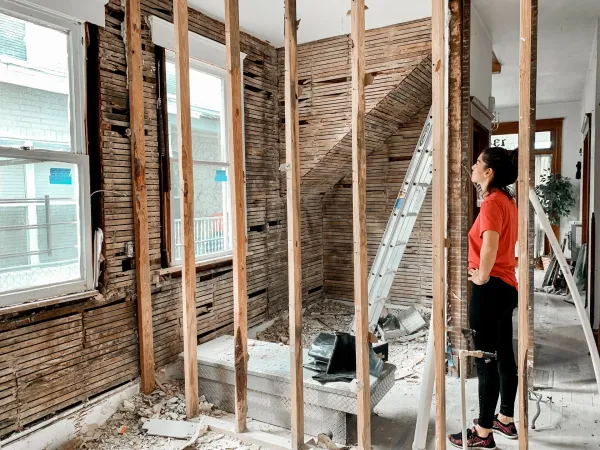
Quota Sampling
The business world has turned out to be one of the most competitive sectors. If you come up with your business, there is no guarantee that you will excel in the first instance. There are various methods that you can employ to ensure that your business becomes competitive in the world. The critical criterion to engage in your business is conducting market research.
Market research must be conducted in a well-organized manner to get the desired results. Otherwise, you can end up wasting a lot of resources and time in vain. There is a need to have a clear plan and proper methodology for the market research. One method for conducting market research is through quota sampling. This article will be explaining more on what is quota sampling.
What is Quota sampling?
Quota sampling is a non-probabilistic sampling technique where the researcher comes up with a sample representative of the entire population. The sample is selected based on some particular characteristics and traits. They decide on quotas and set them up so that market research samples can collect data. The sample must be a true reflector or representative of the population. The last subset of the sample is usually based on the researcher’s understanding of the population.
Far from the random sampling technique, where every participant in a population has an equal probability of being chosen for the research, quota sampling will be relying on convenience or judgemental sampling while coming up with the sample. To understand the size of the sample, one will have to use experiential judgment. This will ensure that the results of the research are reliable and authentic in applying them.
For example, if you want to run a hotel business, you can consider going for quota sampling to understand the market’s demand. Quota sampling will be the best technique to use in coming up with a target sample size. You don’t have to worry so much or spend a lot of time ensuring you reach the desired quota. The recruitment process can be very simple and straight in achieving the desired quota. Your strategy could be as basic as sending an online poll to a prominent restaurant's frequent diners.
Understanding that quota sampling is a non-random technique, some people try to paint it with a negative reputation. Some people claim that the results are biased, although the large community of research has refuted these concerns. The reason why the community emphasizes quota sampling is that the researcher can control and overcome any bias that arises in any instance. Therefore, quota sampling ensures that the quota used is representative of the entire population as much as possible.
Quota sampling allows the researcher to categorize the sample into different groups based on various characters. The attributes can be age, gender, ethnicity, and spending habits. As a result, your quota of 100 participants can be met, for example, by interviewing 50 males and 50 women in the locations you visit. Furthermore, 25 of these 50 males and 25 of these 50 women can be African Americans to achieve racial diversity.
As a result of subdividing your quota, you've effectively allocated a weightage to various qualities inside a target population and confirmed their feature representation in your study. The aspect of categorizing the sample ensures that you overcome bias issues as the conclusions drawn from the research are so representative.
What is the convenience of quota sampling?
Quota sampling is well appreciated because it is one of the time-saving market research techniques. This is because it forms its basis on the availability of the participants. The method goes for anyone available for the interview without discriminating. It helps you avoid spending a lot of time looking for every participant in the target group.
In the case of the random sampling technique, it requires the researcher to come up with a sample pool that has every member who portraits the qualities necessary to the researcher in that particular study. Then survey with enough cases so that each subgroup has a statistically significant base size for analysis when the entire survey population is aggregated into subgroups.
When one uses the non-probability sampling techniques and has well set out quotas, it will ensure that one gets the participants so directly. This ensures that there is no under-representation of any target subgroup in the research. If you use the quotas target, you decrease the sampling errors and have great control of the selection bias. Therefore, at the researcher's end, the results become almost the same as the one obtained from probability sampling criteria.
In quota sampling, weight can be assigned to the characteristics of the control subgroups. This will aid in helping you to ensure that your quota is a good representative of all the necessary attributes. It will also help in saving time and avoid the challenge of time waste that comes with probability sampling.
Examples of how to use quota sampling
When commercial goals drive a company, then the company will not expect to retain its customers. But the business which is doing well now has put their customer interest as a priority. Therefore the business owner has to make the customer feel appreciated. Market research through quota sampling can help in implementing a very inclusive business operation.
Quota sampling shows the interactions between either of the subcategories and will aid in understanding your customers' experience and opinions concerning the services. As a result, you will understand the policies that can be implemented to ensure all the clients feel valued as the business performs well in the industry.
Conclusion
Market research is a very critical tool in driving the business towards success. When you are held up focusing on the venture's success, you might not have enough time for time-wasting research procedures. Hence the interest has to only be driven to very convenient procedures such as quota sampling. If the criteria for getting the sampling frame are not well defined, then the option will also have to go to quota sampling.


